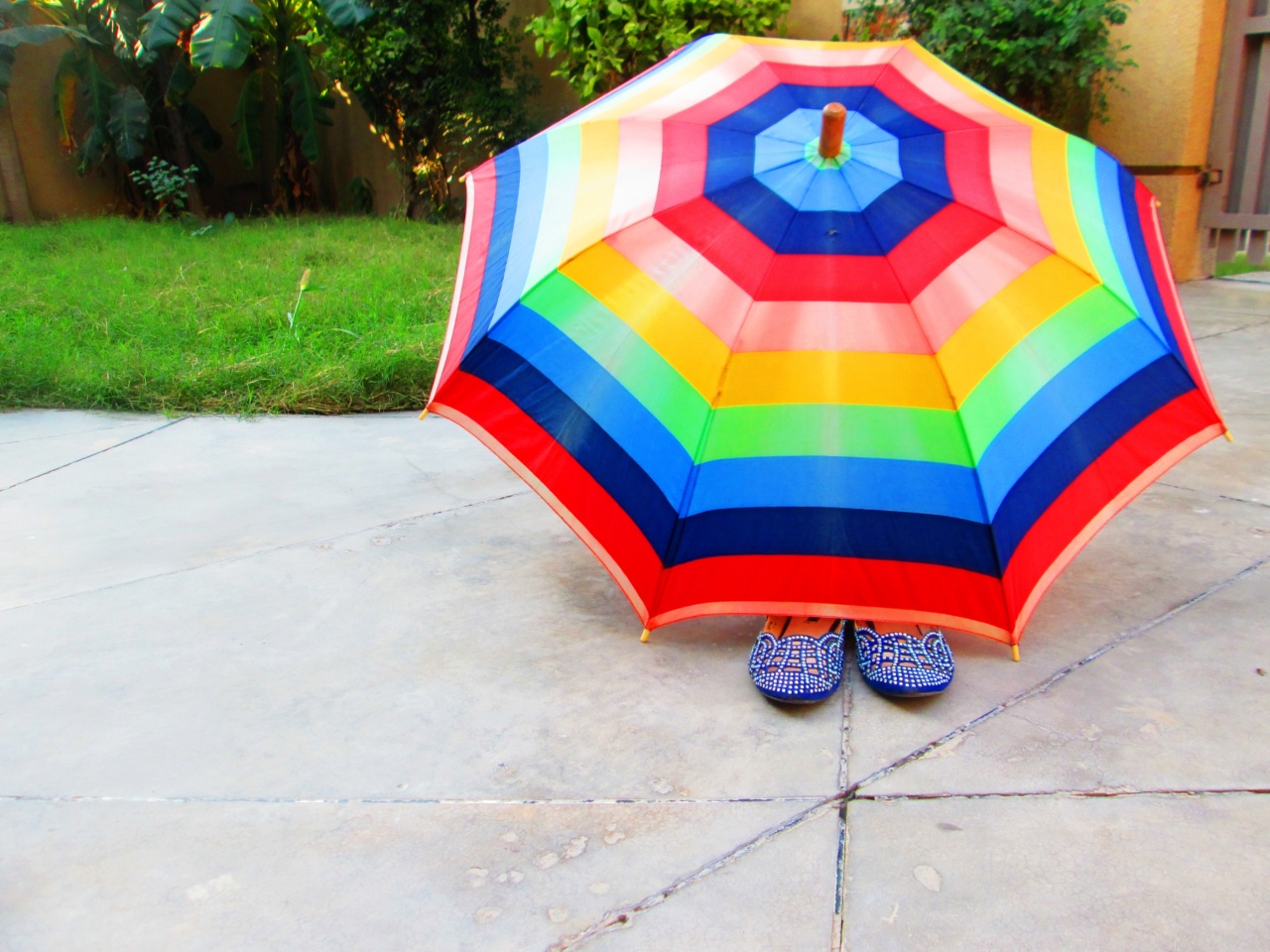The sun is a powerful source of light and heat that is essential for life on Earth. It provides us with vitamin D and plays a crucial role in our overall well-being.
However, prolonged exposure to the sun’s harmful ultraviolet (UV) rays can have detrimental effects on our skin and overall health. This is why it is important to prioritize sun protection and take necessary precautions to shield ourselves from these dangerous rays.
Understanding the Sun’s Rays
Before diving into the importance of sun protection, it is vital to understand the different types of sun rays and how they affect our bodies. The sun emits three types of UV rays: UVA, UVB, and UVC.
UVC rays are the most dangerous, but fortunately, they are absorbed by the Earth’s ozone layer and do not reach us. On the other hand, both UVA and UVB rays can penetrate the atmosphere and reach our skin, causing various sun-related issues.
Protecting Your Skin from UVA Rays
UVA rays are the longest and most prevalent type of UV rays. While they are less intense than UVB rays, they can still pass through clouds and glass, making them a threat even on cloudy or indoor days.
UVA rays deeply penetrate the skin, damaging collagen and elastin fibers, leading to premature aging, wrinkles, and age spots. Furthermore, continuous exposure to UVA rays can also contribute to the development of skin cancer.
To protect your skin from UVA rays, it is essential to incorporate broad-spectrum sunscreen or sunblock into your daily skincare routine.
Broad-spectrum products are designed to shield the skin from both UVA and UVB rays, offering comprehensive protection. Additionally, wearing protective clothing, such as long-sleeved shirts, hats, and sunglasses, can further reduce your exposure to UVA rays.
Defense Against UVB Rays
UVB rays are shorter than UVA rays but are more intense. They are the primary cause of sunburn and contribute significantly to the development of skin cancer. UVB rays have different intensities depending on your location, time of day, and season.
They are most intense between 10 am and 4 pm and are strongest during the summer months.
Applying a generous amount of sunscreen with a high sun protection factor (SPF) is crucial in safeguarding your skin against UVB rays. SPF indicates the level of protection a sunscreen offers against UVB rays.
It is recommended to use sunscreen with an SPF of 30 or higher, reapplying every two hours or after swimming or sweating profusely. Wearing clothing that provides adequate coverage and seeking shade during peak sun hours can also contribute to effective UVB protection.
Preventing Sunburn and Skin Cancer
Sunburn is a visible and painful reminder of overexposure to the sun’s harmful rays. However, sunburns are not just uncomfortable – they signal cellular damage to the DNA in the skin cells.
Additionally, recurrent sunburns increase the risk of skin cancer, including deadly melanoma. Protecting your skin from sunburns through proper sun protection measures significantly reduces the risk of skin cancer development.
Aside from sunscreen and protective clothing, seeking shade during the sun’s peak hours and avoiding tanning beds are essential steps in preventing sunburn and reducing the risk of skin cancer.
Incorporating a wide-brimmed hat and sunglasses into your attire can also provide additional protection to vulnerable areas such as the face and eyes.
Other Sun-Related Skin Conditions
While sunburns and skin cancer are the most well-known consequences of excessive sun exposure, there are other sun-related skin conditions that can adversely affect your health. Some of these conditions include:.
1. Photodermatitis
Photodermatitis is a condition characterized by an abnormal skin reaction to the sun. It can manifest as a rash, blisters, or even hives. Certain medications, cosmetics, and plants can heighten your sensitivity to the sun, leading to photodermatitis.
Effective sun protection can reduce the risk and severity of this condition.
2. Actinic Keratosis
Actinic keratosis is a common precancerous skin growth caused by a cumulative exposure to the sun over time. It typically appears as rough, scaly areas on the skin, and if left untreated, it can progress into squamous cell carcinoma.
Regular use of sun protection can minimize the development of actinic keratosis and prevent its progression.
3. Premature Aging
Excessive sun exposure accelerates the skin’s aging process, leading to premature aging signs such as wrinkles, fine lines, and age spots.
Protecting your skin from the sun helps maintain its health and youthful appearance, reducing the visible signs of premature aging.
By prioritizing sun protection measures, you not only reduce the risk of skin cancer but also mitigate other sun-related skin conditions that can impact your physical and emotional well-being.
The Role of Sunscreen
Sunscreen is one of the most crucial tools in defending your skin against harmful UV rays. However, it is essential to choose the right sunscreen and use it correctly to maximize its effectiveness.
When selecting a sunscreen, opt for broad-spectrum products with an SPF of 30 or higher. Check the label for active ingredients like zinc oxide or titanium dioxide, which provide physical protection by reflecting the sun’s rays from the skin.
Chemical sunscreens work by absorbing and neutralizing the UV rays, but they require at least 15-30 minutes to become effective.
To apply sunscreen correctly, follow these guidelines:.
1. Use an Adequate Amount
Many people apply too little sunscreen, compromising its effectiveness. Use approximately one ounce (about a shot glass full) to cover your entire body. If you apply too little, the SPF will drop significantly.
2. Reapply Regularly
Sunscreen’s protective effects diminish over time, especially when exposed to water, sweat, or friction from towels or clothes. Reapplying sunscreen every two hours, or more frequently if sweating or swimming, ensures continuous protection.
3. Don’t Forget Vulnerable Areas
Nose, lips, ears, the back of the neck, and tops of the feet often get neglected but are highly susceptible to sun damage. Apply sunscreen generously to these areas and consider using lip balm with SPF.
Remember, sunscreen should be used year-round, as UV rays can still harm your skin during winter or on overcast days.
The Importance of Shade and Protective Clothing
In addition to sunscreen, seeking shade and wearing protective clothing are vital for comprehensive sun protection.
During peak sun hours (10 am to 4 pm), the sun’s rays are strongest and most harmful. It is advisable to stay in the shade during this time to minimize the risk of skin damage. Seek refuge under trees, umbrellas, or pop-up canopies.
If shade is not readily available, consider creating your own by using portable sunshades or beach tents.
When it comes to clothing, opt for long-sleeved shirts, long pants or maxi skirts, and wide-brimmed hats. Dark-colored, tightly woven fabrics provide better protection than light-colored or loosely woven materials.
Additionally, consider purchasing clothes with ultraviolet protection factor (UPF) labels, which indicate their ability to block UV rays effectively. Protecting your eyes with sunglasses that block both UVA and UVB rays is also crucial to prevent eye damage.
Conclusion
Protecting your skin from the sun’s harmful rays is vital for maintaining its health and preventing various sun-related conditions.
Prioritizing sun protection measures such as using sunscreen, seeking shade, and wearing protective clothing are essential practices that reduce the risk of skin cancer, premature aging, and other sun-related skin conditions. By incorporating these habits into your daily routine, you can enjoy the outdoors while keeping your skin safe and healthy.




























